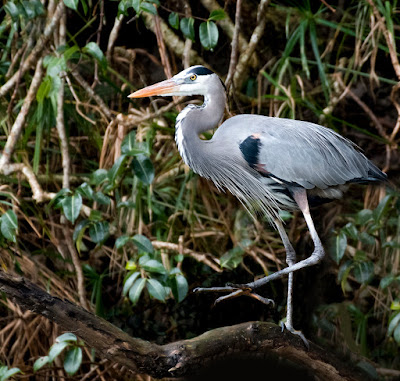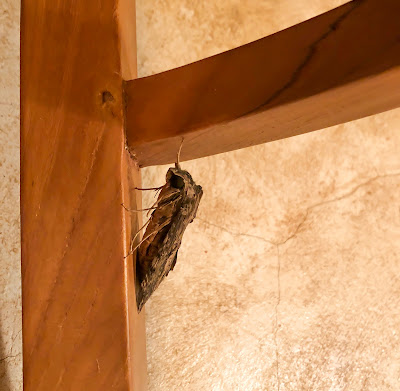 |
| Silver argiope spider |
Sometimes fences make for good neighbors, as the saying goes. But our backyard fence has actually attracted some questionable characters. These recent ones were certainly odd looking, but I felt it might be interesting to get to know them a bit better.
At first, I thought the web was made by a golden orb spider (Trichonephia clavipes), since I had run into their big webs before (literally) while hiking along island trails. However, on closer inspection the shape and face of the spider weren’t right, and I figured out it must be a silver argiope (Argiope argentata).
 |
| Golden orb spider |
The golden orb spider actually does spin a golden web, and you can see the color if the light catches it the right way.
 |
| Golden orb spider web |
After inspecting the spider on our fence more closely, I saw that what looked like a friendly clown face was actually the back of the silver argiope spider. The real face was a lot less attractive, with grasping pincers and a biting mouth.
 |
| Silver Argiope spider face |
The silver argiope web has distinctive white zigzag weavings that apparently help stabilize the web. When an insect flies into the web, the spider will feel the vibrations and move to immobilize the insect quickly by wrapping it in silk. Less thrashing around helps protect the web from damage, even though the delicate silk strands are surprisingly strong.
Once I saw a lizard that had gotten tangled up in a big spider web and torn it up, but the silk strands still held its weight. I don’t think the spider intended to catch it, but maybe the lizard was thinking about eating the spider.
 |
If a large moth or butterfly gets caught, the silver argiope spider will give it a venomous bite, and then wrap it up in silk like a mummy. Smaller insects might just get restrained in their wrappers without being bitten until feeding time.
During my research, I learned that the big spider was a female. The much smaller one hanging around the web at dinner time was the male, not a baby.
 |
| Small male and large female silver argiope spiders with a moth wrapped for dinner. |
I never saw any mating behavior between the two spiders. They kept that private. I also read that the female eats the male immediately afterwards.
One day the web and the spiders just disappeared. Very mysterious. I wondered if it was because of a predator, or if it was just time for them to move on.
They had been entertaining neighbors after all, and I missed them.












































